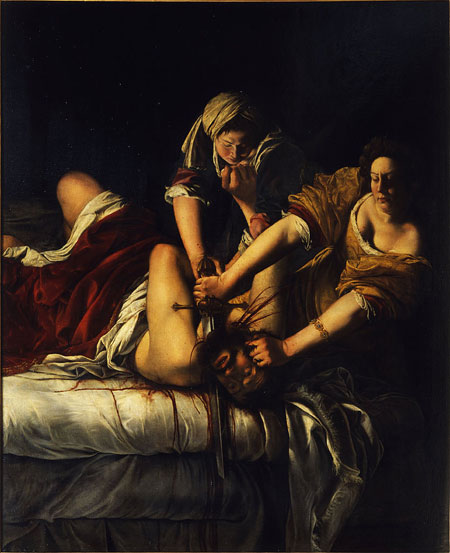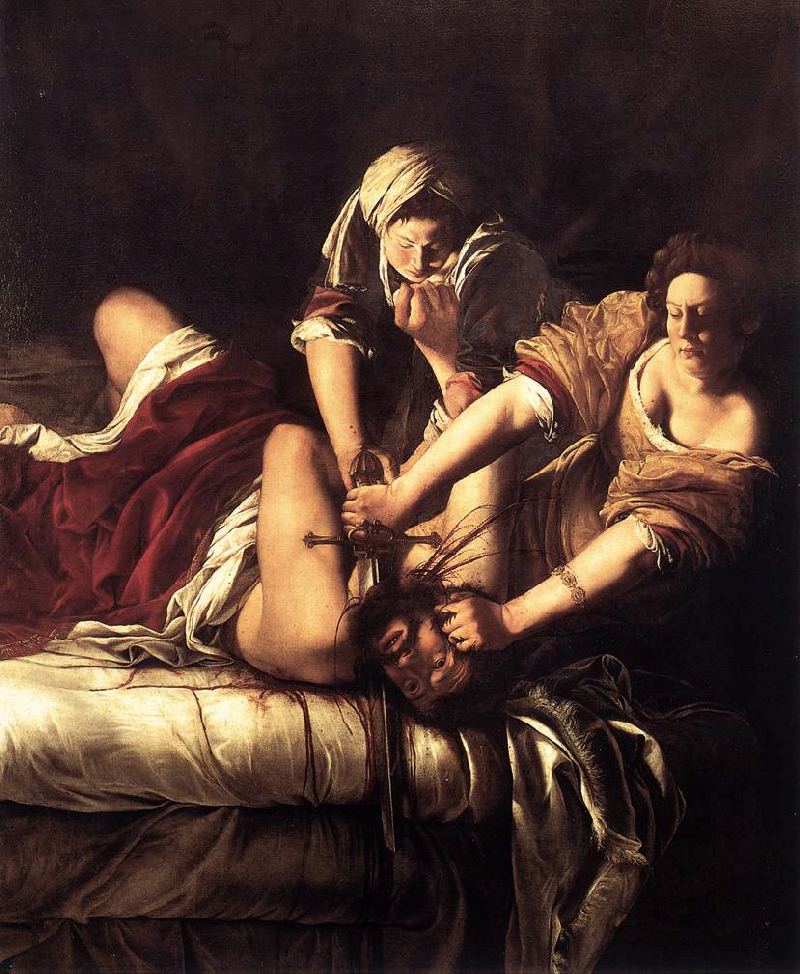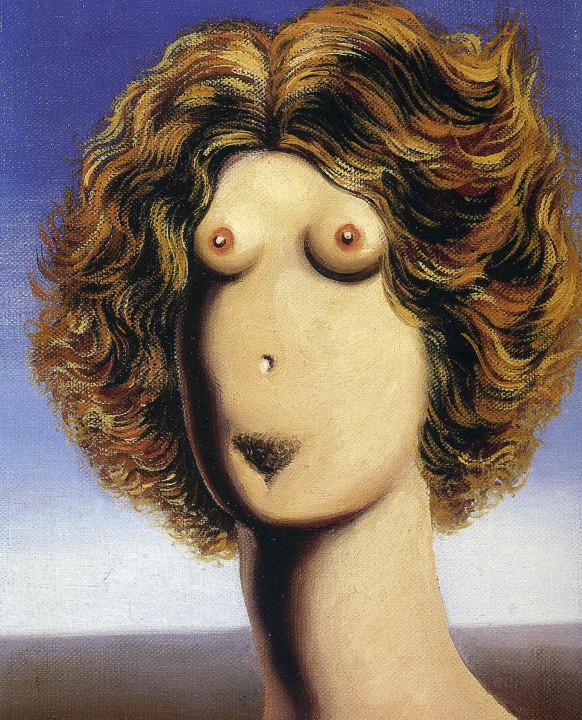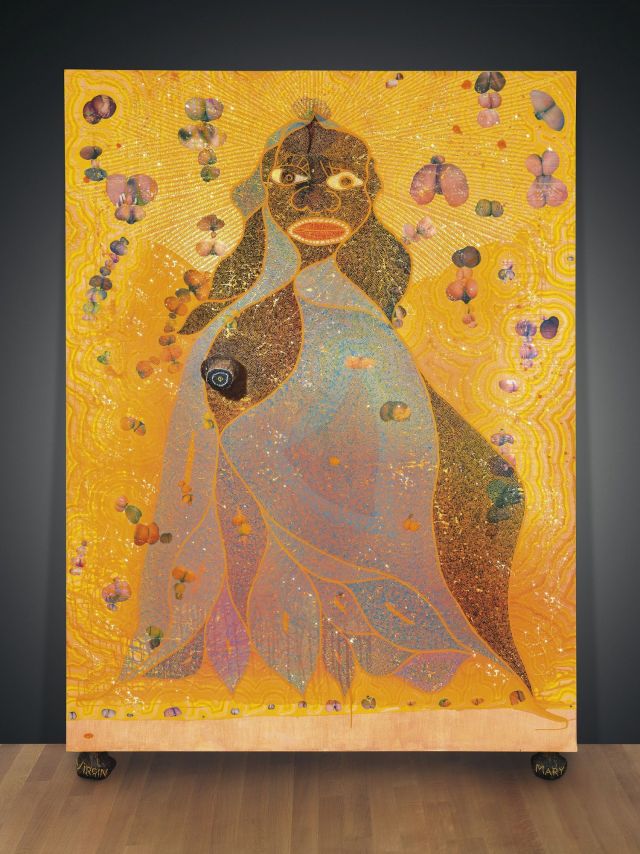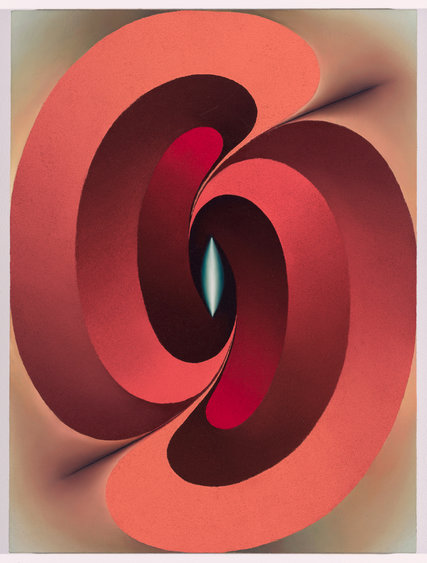Judith beheading Holofernes is a biblical story in which a young widow assassinates an Assyrian general who is about to destroy her city. She utilizes her femininity to receive an invitation to his quarters and have drinks with the man, and once he has fallen asleep from drinking, she strikes. Many artists drew and continue to draw inspiration from this story, particularly in the Renaissance and Baroque eras, but perhaps the most well known is Artemisia Gentileschi’s Judith Slaying Holofernes.
The painting above is one of the most vivid and violent depictions of the scene, with blood spurting wildly out of Holofernes’s neck and staining his white sheets all over. Judith and her maidservant Abra hold down the much stronger man. His body is contorted in struggle, his arm reaching out to fight against Judith’s accomplice. Jets of blood shoot out of his artery and land on Judith’s wrists. Still, her grip is unyielding. The brutality of this painting is, for lack of a better word, shocking, and has even been described by Italian art historian Filippo Baldinucci as “inspiring no little amount of terror.”
Many art scholars have hypothesized that Judith is Artemisia’s alter ego of sorts. At 17 years old, Artemisia was raped by the artist Agostino Tassi. Upon learning of this event, Artemisia’s father, and friend of Tassi, sought recourse in court. In this sensationalized trial, Artemisia described her rape and her attempt to defend herself with a knife. Sound familiar? Perhaps this work is Artemisia’s way of gaining retribution, as Tassi’s sentence was never carried out. Interestingly, in the painting, Judith wears a bracelet containing a picture of Artemis, the Greek goddess of chastity. This links the painter’s personal story to Judith’s. Even more obvious, the name Artemisia is likely derived from Artemis, further supporting the idea that Judith is really Artemisia’s portrayal of herself.
Gentileschi very well could have painted this in search of catharsis, but many art scholars today are moving away from that interpretation and are moving towards one with a broader perspective. The 1600s did not offer many opportunities for women, but Gentileschi’s bold, assertive paintings allowed her to carve a space for herself in a field dominated by men. In fact, it has been stated that Gentileschi is the most celebrated female painter of her century. Like Judith Slaying Holofernes, much of her work portrayed the strength and power of heroines.

